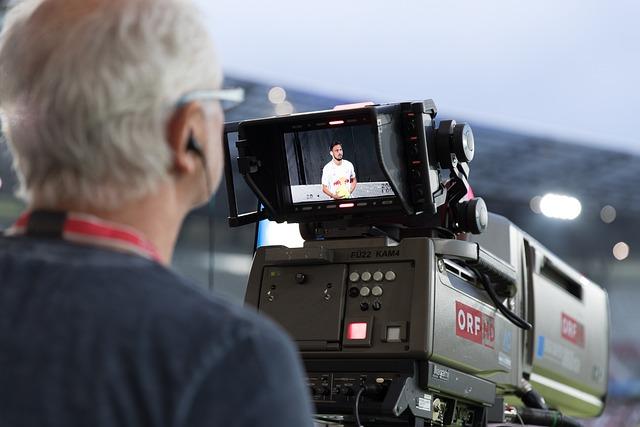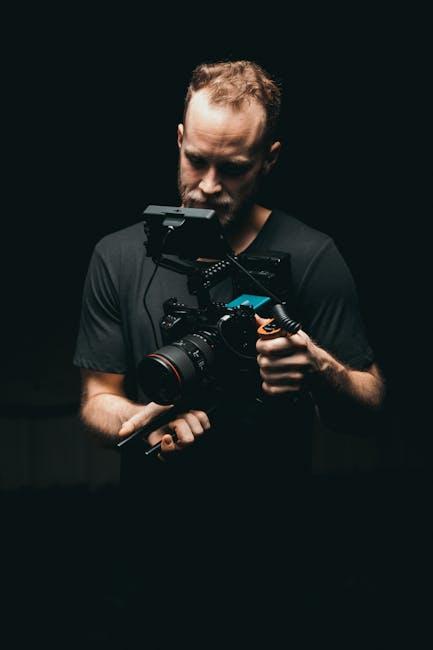Lights, camera, action! These words signal the start of another day in the captivating world of filmmaking, where the magic of cinema comes to life. But what really unfolds behind the camera, beyond the glitz and glamour of the silver screen? In this exploration of a day on a film set, we peel back the curtain to reveal the intricate dance of creativity and chaos. From the crack of dawn to the final wrap, discover the unsung heroes, the meticulous planning, and the spontaneous moments that shape the stories we love. Join us as we delve into the heart of the film set, where every take tells a tale of its own.
Crafting the Vision: The Directors Daily Journey
The director’s day begins long before the first call of “action.” As the creative helm, they immerse themselves in the script, envisioning every detail and nuance. The morning is often spent in pre-visualization, crafting storyboards and mapping out each scene with precision. Overseeing the set design, they collaborate with the art department to ensure that the world being built aligns perfectly with their vision.
Throughout the day, the director is a conductor of creativity, balancing technical demands with artistic aspirations. Key tasks include:
- Collaborating with cinematographers to perfect lighting and camera angles.
- Guiding actors through rehearsals, exploring character motivations and dialogues.
- Coordinating with sound and special effects teams to enhance the storytelling.
In the whirlwind of activity, the director remains the steadfast visionary, adapting to challenges while maintaining the essence of the narrative. Every decision, every frame is a step towards crafting a story that resonates.

Lighting the Scene: The Art and Science of Cinematic Illumination
The dance of shadows and light on a film set is a meticulous choreography that brings stories to life. Cinematic illumination is both an art and a science, requiring a deep understanding of mood, texture, and tone. Lighting technicians, often unsung heroes, work tirelessly to create the perfect ambiance. They manipulate various tools and techniques to transform a simple scene into a visual masterpiece.
- Key Lighting: Sets the primary source of light, establishing the scene’s overall mood.
- Fill Lighting: Softens shadows and balances the key light for a natural look.
- Backlighting: Adds depth and dimension, often used to create a halo effect.
Each setup is carefully crafted, with light meters and color gels playing a pivotal role. The interplay of light and shadow is not just about visibility; it’s about emotion and storytelling. The crew’s ability to adjust and adapt lighting techniques on the fly ensures that every frame is picture-perfect, capturing the director’s vision with precision.

Behind the Lens: Cinematographers and Their Creative Tools
In the bustling world of a film set, the cinematographer is the silent architect of visual storytelling. Armed with an array of creative tools, they transform scripts into breathtaking visuals. Their toolbox is as varied as it is essential, including:
- Cameras and Lenses: From the precision of prime lenses to the versatility of zooms, each choice affects the film’s tone and mood.
- Lighting Equipment: Mastering light is key, with tools like LED panels, HMIs, and softboxes shaping the scene’s atmosphere.
- Camera Rigs: Whether it’s a steady dolly or a dynamic gimbal, these rigs add motion and emotion to every shot.
- Filters and Diffusers: Subtle yet powerful, these accessories manipulate color and clarity, enhancing the narrative.
Every decision made by the cinematographer is a dance between technology and artistry, ensuring that each frame is not just captured, but felt. Their expertise in balancing the director’s vision with the technical demands of filming is what truly brings a story to life.

Soundscapes and Silence: Capturing Audio Magic on Set
On a film set, the auditory landscape is as crucial as the visual. The subtle rustle of leaves, the distant hum of traffic, or the eerie silence before a dramatic moment—each sound tells a story. Capturing this audio magic involves a blend of technical expertise and artistic intuition. Sound engineers, often armed with boom mics and hidden lavaliers, navigate the bustling set, ensuring that every whisper and shout is recorded with pristine clarity. It’s not just about capturing noise; it’s about weaving a tapestry of sound that complements the visual narrative.
- Ambient Sound: This sets the mood and immerses the audience in the environment.
- Dialogue Clarity: Ensuring every word is audible, even amidst chaos.
- Silence: Sometimes, the absence of sound is the most powerful element.
Creating these soundscapes requires a delicate balance. The team must decide when to let natural sounds breathe and when to add layers in post-production. This dance between capturing the organic and enhancing the auditory experience is where true audio magic happens.

